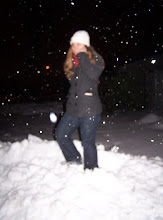Devitt notes in "Generalizing about Genre: New Conceptions of an Old Concept," that "based on our identification of genre, we make assumptions not only about the form but also the text's purposes, its subject matter, its writer, and its expected reader" (575). We have talked about this concept in class this week as we began discussing reading and analyzing texts.
Particularly, on Friday, we reviewed rhetorical situations and how they help us read a text. As the students offered parts of rhetorical situation for discussion, one insightful student commented that all of these parts work together. I had been trying to get them to realize this since the beginning of the semester, but Friday, the light came on. He elaborated that the form/media/design an author chooses directly corresponds to the intended audience and purpose of the text. Hallelujah! There was much rejoicing in the land!
To drive the point home a little more and to illustrate the kind of close reading we would perform over the next several weeks, we re-read the 9/11 Commission Report excerpt in the Norton Field Guide textbook, examining it specifically in the context of the purpose, the content, the form, the media, the design, and the audience and what these things reveal to us about the text.
Once we had successfully analyzed the text (at least to the point that they were tired of talking about it), I passed around my personal copy of the 9/11 Commission Report in graphic novel form. The discussion that followed allowed us to think about and discuss why someone would feel it necessary to alter the design or genre of the report. Who was the audience? Did the text reach an entirely different audience than the report itself. Because the content had not changed (the wording is still the same) the students decided that this text would be read more readily (haha) by those who tend to read graphic novels. That the form also allowed the reader a more a visual connection to a report full of facts and times. While they thought the report itself evoked emotion, the pretty much unanimously decided that seeing graphic representations of the burning towers evoked a stronger response. We proceeded to compare the two texts side by side, looking for further similarities and differences in rhetorical situation. What was the purpose of the graphic novel? Was its purpose different from the report in the textbook? Hopefully, this excercise helped them to think of rhetorical situation and genre (I know I'm supposed to be talking about genre) in a more concrete way.
Ok. To end these musings (although I find them personally productive) and to return to the article at hand, I found it noteworthy that Devitt stresses the importance of thinking about genre not only in terms of reading, but writing. She explains, "Prewriting and revising processes probably differ for different genres, since those genres represent different situations, including constraints" (584). Personally, I find it easier to think about genre in terms of what I'm reading as opposed to what I'm writing most of the time. Unless I'm writing something like an abstract, a cv, or a proposal letter, I rarely consciously consider the genre. I don't think (in fact I know) that most of my students don't consider genre when they're writing either. The guidelines in the assignment sheet spells the rhetorical situation out for them, and we talk about it in class, but I don't know that many of them actually think about it when they revise (if they revise). Therefore, I have decided that for the next paper, I'm going to have a revision/workshop day where they examine their rhetorical situation and genre closely i nterms of the choices they make when writing. You know, I think I'm learning much more than my students.
Subscribe to:
Post Comments (Atom)

No comments:
Post a Comment